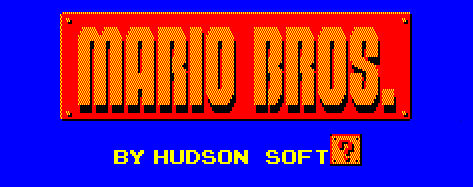

By John Szczepaniak - August 2010
Hudson's Lost Mario Trilogy
Punch Ball Mario Bros cover (FM7)
Mario Bros Special cover (PC6001)
Super Mario Bros Special (back cover)
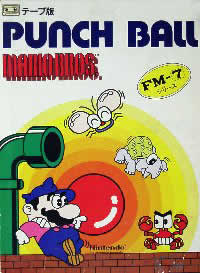
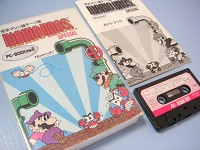

Mario Bros Special comes across as a strange blend of the original arcade Mario Bros and other Nintendo games like Donkey Kong. It features only 4 levels, but Hudson went all out to make this title unique and exciting.
Interestingly, it was released around the same time as Punch Ball Mario Bros, but is vastly superior in terms of enjoyment, which makes me curious as to why Hudson felt the need to develop two contrasting versions. The existence of these titles implies an atmosphere of experimentation during development. Regardless, it’s a fantastic oddity of such high quality, and ridiculously good fun, that it should have been re-released.
The first level is a series of four screen-spanning platforms, containing gap(s) that are in constant movement. The aim is to reach the top by timing your jump to pass through the gap and land on the floor above. Once at the top there are 5 switches which need to be activated to reveal the level exit - but the switches are timed, so if you don’t hurry they’ll revert back to their original position and close the exit. It’s a tricky level, but extremely enjoyable in a NES-era sort of way.
Level two sees the platforms replaced with 10 trampolines, and two turtle enemies appearing from the pipes above. Bouncing on a trampoline while a turtle is standing on it will flip him over, allowing you to defeat him. Once both are taken out the level exit appears.
Level three is the most complex of the four levels, featuring four conveyor belts, a central elevator platform, multiple enemies, and later another moving platform which must be used to grab a diamond ring and finish the level.
The final level is a variation of Mario Bros’ collect all the coins bonus stages, except the coins have been replaced with dollar signs. All need to be collected, along with a final ring, for any bonus points to be awarded. Failure to get the ring results in nothing.
It's worth noting that the FM-7 version, when emulated, will cause Mario to run constantly once you've pressed a keyboard button, and he only stops when you press down or leap to another platform. Presumably this was implemented by Hudson due to problems with latency in the FM-7 keyboard, since the PC-88 version doesn't have this problem, but it makes playing the FM-7 version frustrating. On the PC-88 though, you'll need to manually reduce the emulator speed since by default it runs a little too fast.
Fan page detailing Mario Bros Special, and several other Nintendo ports to the PC-88.
Mario Bros Special - FM7
Mario Bros Special - FM7
Mario Bros Special - FM7
Mario Bros Special - FM7
Mario Bros Special - PC6001
Mario Bros Special - PC6001
Mario Bros Special - PC6001
The most ambitious of the three games, and as a result the one with the most problems. This tries to be a remake of Super Mario Bros on the NES, and while it has a greater level of depth and variety than the two previous titles, the limitations of the hardware can make it frustrating to play.
It’s also an exercise in masochism. The designers at Hudson seem intent on punishing you for playing it in the same way as the original SMB, which ironically means it’s great for retro enthusiasts to examine now, but would have defeated the purpose of creating such a port back in the day.
It was presumably to appeal to computer owners who wanted to enjoy what their console-owning friends were playing, so the utterly absurd and at times surreal design changes would have alienated anyone expecting a true Mario game. This goes beyond what the original Lost Levels attempted, in terms of subverting Miyamoto’s original vision, and I can imagine hundreds of Japanese children angry with frustration at just how punishing and strange it is.
The big difference is that the screen doesn’t scroll smoothly, but instead flicks across. Annoyingly you can see part of the next area, meaning the screen flicks across before Mario reaches the edge, totally destroying any sense of timing for precise jumps. Plus, turtle shells will bounce off of scenery even if it's on a subsequent screen, threatening to kill unsuspecting players. The fact the screen doesn't scroll can, in some cases, make this appear as if turtle shells are bouncing off open space.
Then there are pipes in strange places implying a secret warp but leading nowhere! Meanwhile invisible coin blocks are placed at the most infuriating of places, so as you launch into what appears to be an open jumping areas, said block appears and sends you hurtling down a hole. It's like Hudson was intentionally trying to mess with your mind. There's also cameo appearances from the Hudson bee, plus enemies from Mario Bros and Donkey Kong (Mario can even grab a DK hammer at one point).
For some reason Mario doesn't automatically enter the warp pipe at the end of level 1-1, and so the player must manually make him walk into it. Then there's the fiendish puzzles, such as in world 4-3, where you need to make both sides of an elevator drop off the string they are on, to make a platform appear two screens onwards. Failure to do so makes the stage impossible to finish.
While the most fascinating to read about and contemplate, because of its sheer strangeness, the technical limitations, high difficulty and general glitchiness make it the least fun to play. Youtube user powerfulnana used to have over 20 videos, showing how to complete the game, but at the time of writing, their account has been suspended. NicoNico video would be a good place to sign up for videos.
Released on both the PC-88 and X1 computers, the X1 version (like most games released on both systems) is superior. Although the colours are a little over-saturated, there are more of them onscreen, whereas the PC-88 version looks distinctly orange, and doesn't even display the colour green. Look closely at screenshots of the pipes, they're actially a blue/yellow mosaic. The timing is also off, and runs too fast - though attempting to lower the PC-88's CPU clock speed results in the game going choppy. If emulating them, it's worth getting the X1 version, but in either case, play around with the CPU clock speed to find what suits you.
Also, since it's such a difficult game, the ending can be seen HERE. Courtesy of ReyVGM and 20 hours' worth of playing.
PC-88 screenshots courtesy of Opi via the VG Museum. Cover image provided by PC88 Game Library.
Comparison screens:
Super Mario Bros Special - X1
Super Mario Bros Special - X1
Super Mario Bros Special - PC-88
Super Mario Bros Special - PC-88
Super Mario Bros Special - PC-88
X1
X1
X1
PC-88
PC-88
PC-88
Screenshots of the PC6001 version
Mario Bros Special
マリオ ブラザーズ スペシャル
PC-6001 and PC-6601 ranges, PC-88, FM-7, X-1 (1984)
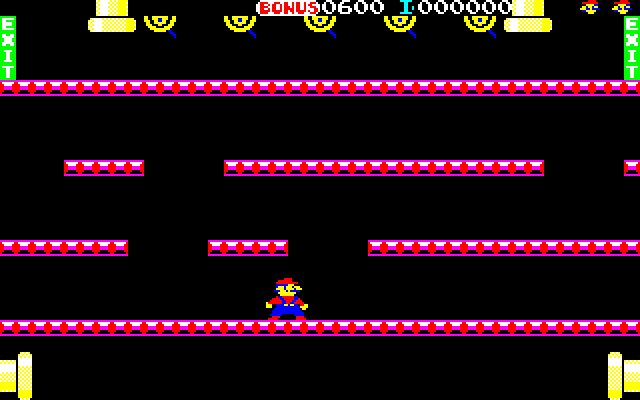
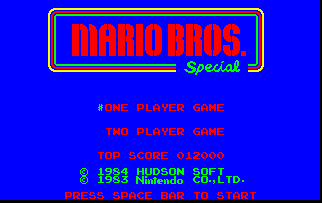
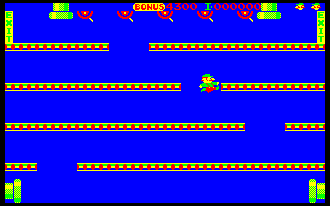

Super Mario Bros Special
スーパーマリオ ブラザーズ スペシャル
PC-88, X-1 (1986) / Samsung SPC-1500 (Korea 1987)
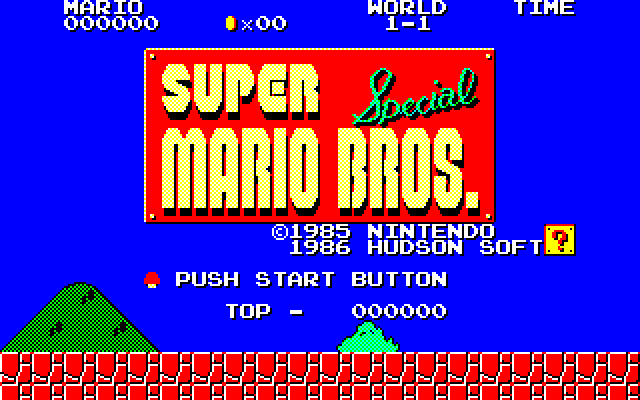
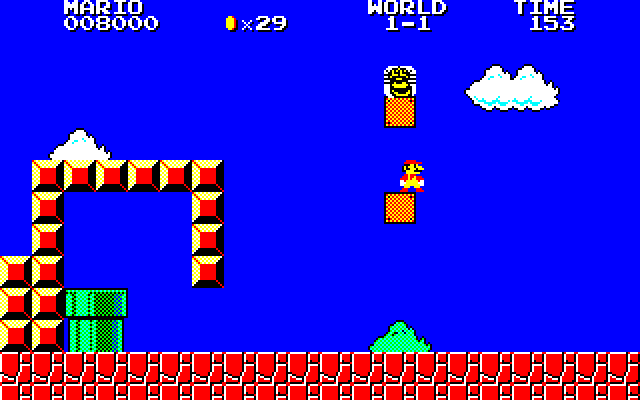
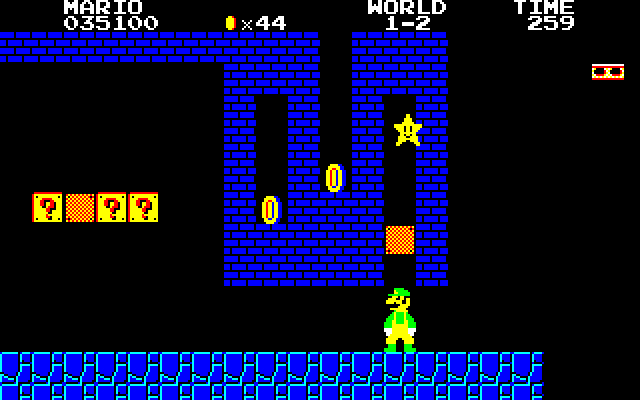
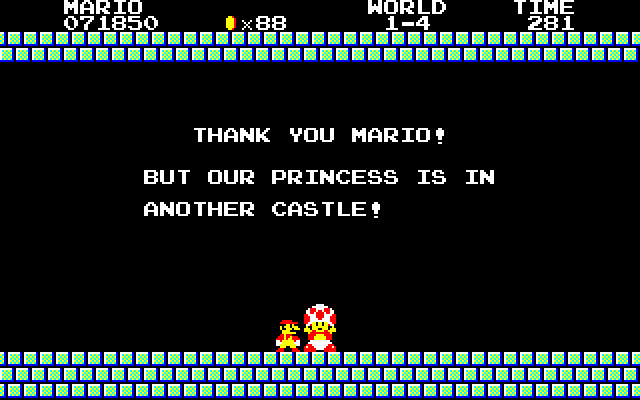
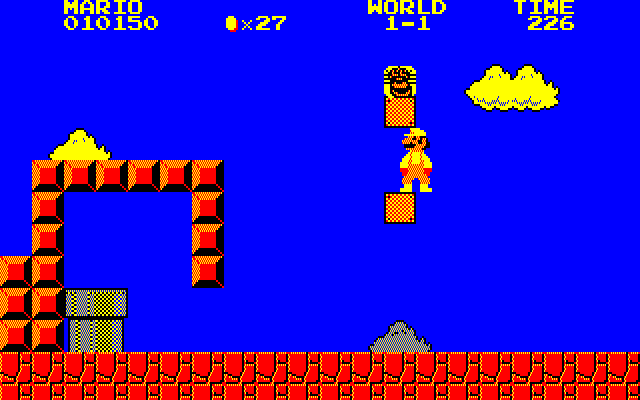
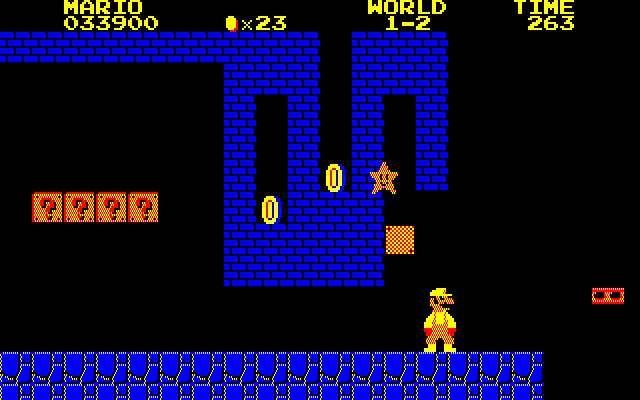

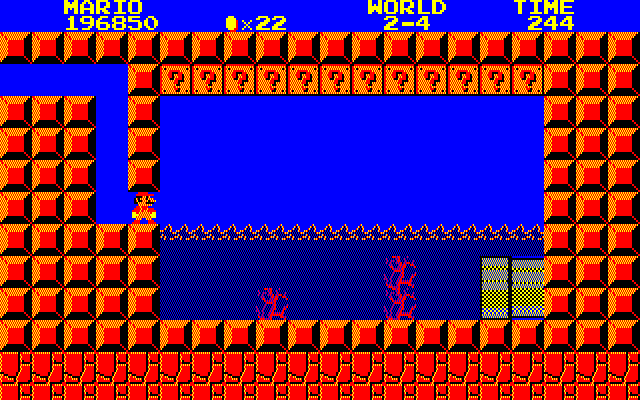


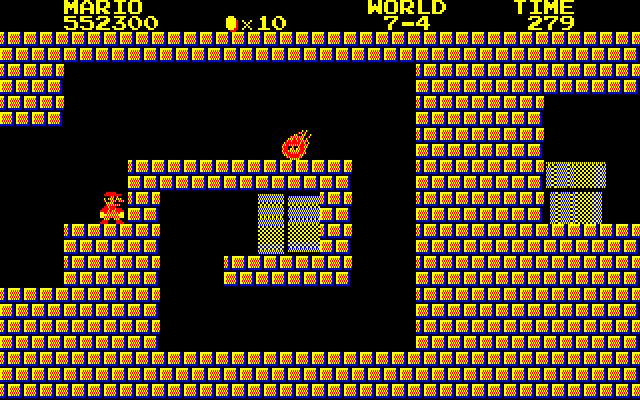
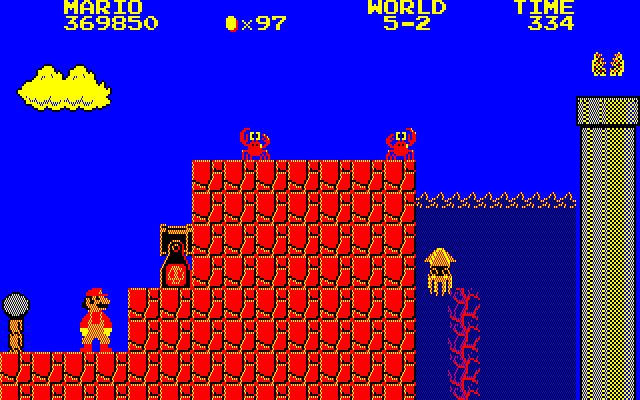
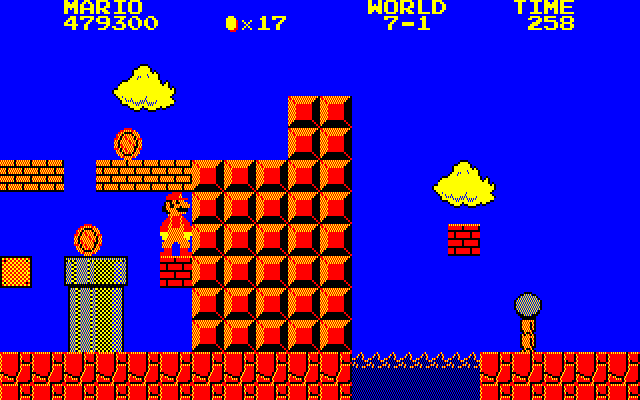
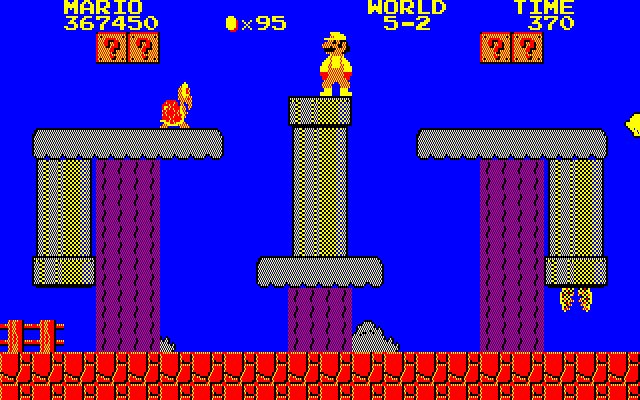
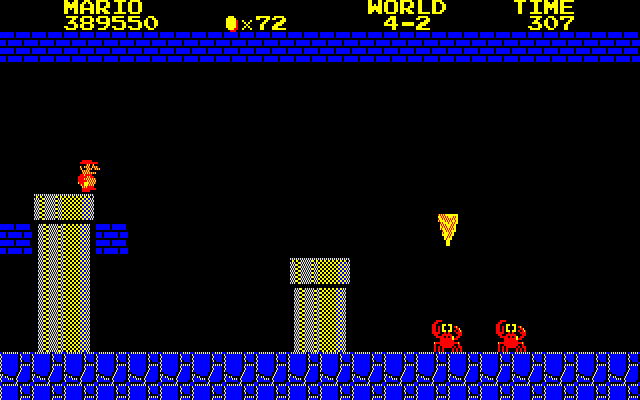


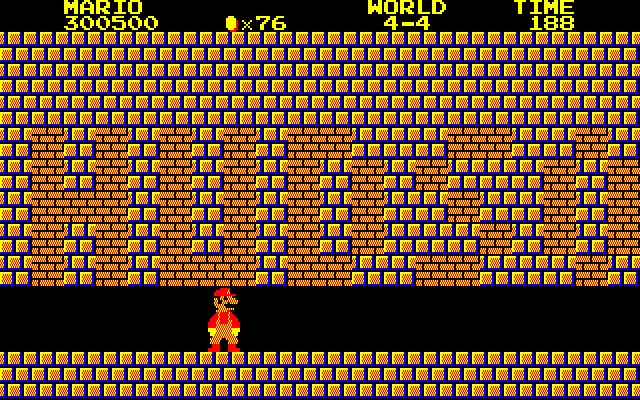
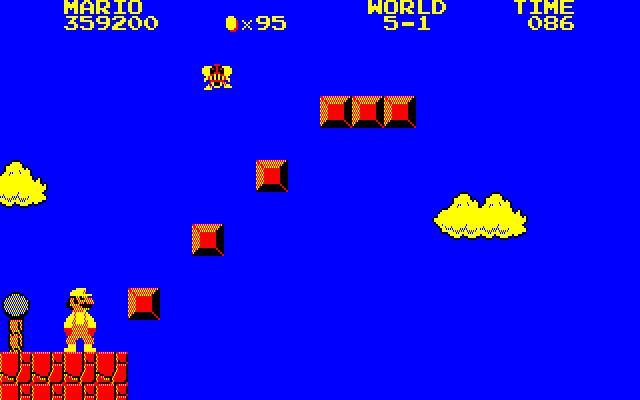
EMULATION
Tracking down emulators and disk images can be extremely difficult, so we're going to host all you need RIGHT HERE. The ZIP file contains the PC-88 emulator M88, along with all needed ROM files, plus disk images of the three Mario games. To make things even easier, we're including a save-state for each game. So, do the following:
1) Load the emulator
2) Load the disk image via DISK and DRIVE 1 (the games are in a folder named as such)
3) Go to TOOLS and click LOAD SNAPSHOT. This should load the title screen, without any need to mess around with emulator mode settings.
As a neato bonus, we've included the X1 disk image of Super Mario Bros Special, since it's the more colourful version, along with the emulator. Just load from FDD0.
Enjoy!
Since most disk images of SMBS contain a bug, a patch has been made. Whether you have the patience to reach level 4-4 is another matter entirely.